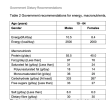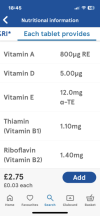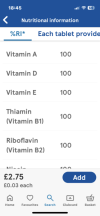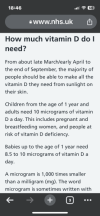- Relationship to Diabetes
- Type 1
- Pronouns
- He/Him
Moderator note: This side conversation about RDA was split from a newbie thread here (to save it going wildly off-topic): https://forum.diabetes.org.uk/boards/threads/out-of-control-blood-sugars.105982/#post-1256801
Yes, I added the ‘healthy adult’ quite deliberately! I’ve edited to try to avoid any potential confusion.
It was for reference, not a recommendation. It’s the RDA stuff that’s on food packaging, so I think it’s helpful to bear in mind when considering dietary advice about ‘healthy eating’. And yes, what may be suitable for someone with a fully-firing metabolism may not be appropriate for someone with diabetes - but these will be the numbers that give rise to the traffic light labels and so on (which I find to be as useful as a chocolate fire guard myself).
If you want to dig deeper, the 2016 UK government recommendations are here:
Not sure if these have been updated since.
Yet the OP with blood sugars in the 15-20 range is fairly obviously not a "healthy adult" so this figure isn't especially helpful.
Do you know why this specific figure is "recommended" and by whom?
Yes, I added the ‘healthy adult’ quite deliberately! I’ve edited to try to avoid any potential confusion.
It was for reference, not a recommendation. It’s the RDA stuff that’s on food packaging, so I think it’s helpful to bear in mind when considering dietary advice about ‘healthy eating’. And yes, what may be suitable for someone with a fully-firing metabolism may not be appropriate for someone with diabetes - but these will be the numbers that give rise to the traffic light labels and so on (which I find to be as useful as a chocolate fire guard myself).
If you want to dig deeper, the 2016 UK government recommendations are here:
Not sure if these have been updated since.
Last edited:





